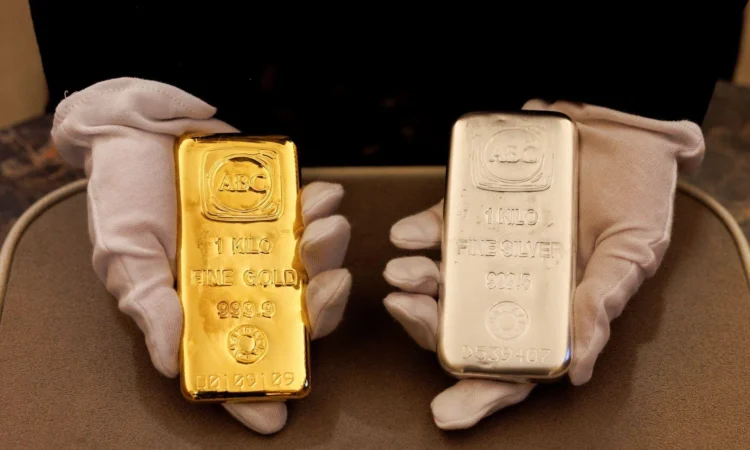
[NEW YORK] Gold and silver saw their steepest sell-off in years as investors locked in profits on concern that the recent historic rally in the precious metals left them overvalued.
Spot gold prices slumped as much as 6.3 per cent, the biggest decline in more than a dozen years, while spot silver dropped as much as 8.7 per cent after technical indicators showed earlier gains may have been overdone.
“A drop of more than 5 per cent is rare,” Alexander Stahel, a resources investor in Switzerland, said of bullion’s plunge. “In theory, it would be once in hundreds of thousands of trading days.”
The market plunge brought an abrupt halt to a surge that had seen both gold and silver post record highs in the past week. Gold had soared in large part because of bets on the US Federal Reserve making at least one outsized rate cut by year-end, as well as the so-called debasement trade, in which some investors have pulled away from sovereign debt and currencies to protect themselves from runaway budget deficits.
Gold’s pullback emanates from a combination of quite powerful technical indicators, according to Frank Monkam, head of macro trading at Buffalo Bayou Commodities. He sees strong support at US$4,000 to US$4,050 and expects prices to climb again after returning from overbought positions. “A positioning cleanup should set us up for the next leg higher, led by ETFs” and emerging markets central banks flows, he said.
The record-breaking bullion rally since September had been mostly driven by followers of market trends, and such trading “naturally has the potential to go the other way as soon as we get a couple of days of prices coming off”, said Helen Amos, a commodity analyst at BMO Capital Markets.
BT in your inbox

Start and end each day with the latest news stories and analyses delivered straight to your inbox.
A stronger US dollar is also reducing the appeal of precious metals. Gold fell 5.3 per cent to US$4,125.22 an ounce as at 4.59 pm in New York, while silver traded 7.1 per cent lower at US$48.71 an ounce.
The shutdown of India, the second-biggest gold buyer, for the Diwali festival has also drained the market of significant liquidity. In the silver market, which unlike gold is not just a store of wealth, but a metal with industrial utility, the gains in recent weeks have if anything, been even more dramatic.
A historic squeeze in the London silver market last week drove prices beyond the record set in 1980, during a notorious attempt by the Hunt brothers to corner the market. Benchmark prices traded above New York futures, prompting traders to ship metal to the UK capital to ease tightness.
On Tuesday, silver in vaults linked to the Shanghai Futures Exchange saw the biggest one-day outflow of silver since February, while New York stockpiles have also fallen.
Bullion’s ascent to a fresh record last week was partly driven by concerns over credit quality in the US economy. That helped holdings of physically backed gold exchange-traded funds recording a massive fund inflow of US$8 billion last week, the biggest weekly inflow in data going back to 2018, according to data from the World Gold Council.
“When you have got that much money quickly coming into the space, it’s only natural to expect some of that money to leave as well when people have made a quick return,” Amos said.
With the ongoing US government shutdown, commodity traders have also been left without one of their most valuable tools: a weekly report from the Commodity Futures Trading Commission that indicates how hedge funds and other money managers are positioned in US gold and silver futures. Without the data, speculators may be more likely to build abnormally large positions one way or another.
“The absence of positioning data comes at a delicate time, with a potential build-up in speculative long exposure in both metals making both more vulnerable to correction,” said Ole Hansen, commodities strategist at Saxo Bank.
Gold’s run since 2023 has helped it reach out to the mainstream investors, though they are typically less committed to their trades and are more inclined to take profits. Those so-called retail investors also have contributed to the price retreat.
The long-term drivers, including persistent central bank buying, that have brought gold to successive record highs remain intact and analysts still expect prices to resume rising in the coming months.
“We like the gold story, we think the gold story is fundamentally a good one,” BMO’s Amos said. “We are forecasting prices around US$4,500 next year. But no prices like going a straight line. Pullbacks are kind of healthy and we think this is inevitable that we are getting a little bit of volatility along the way.” BLOOMBERG





